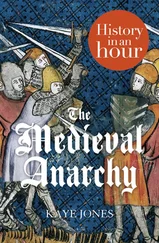SENLAC RIDGE, BATTLE OF
The original name for what is now known as the Battle of Hastings in 1066 between the Norman army of William, Duke of Normandy, and the English army of Harold, King of England. Victory for William led to a Norman dynasty on the English throne and a dramatic new course for English and British history. A few miles north of Hastings on England’s south coast, Senlac Ridge was originally known in English as Santlache (Sandy Stream), which the Normans changed into Sanguelac (Blood Lake) and which was then shortened to Senlac. Senlac Ridge, also called Senlac Hill, was approximately 275 feet (84 metres) above sea level, before the top of the ridge was levelled off to create Battle Abbey.
SIEGE OF ELY
The Siege of Ely was the last redoubt of the English Revolt against Norman Rule in 1069. By 1071 only a small number of survivors, led by Hereward of Bourne (who later became better known as Hereward the Wake), were besieged by King William at Ely, which was then an island in reality as well as in name. William’s siege was successful in the autumn of 1071. Most of the defenders were killed, while a few survivors are thought to have escaped into the fens or the wildwood; all became legends.
SUCCUBAE
In folklore traced back to medieval legend, a succubus (plural, succubae or succubi) is a female demon or supernatural being appearing in dreams who takes the form of a human woman in order to seduce men, usually through sexual intercourse. The male counterpart is the incubus. Religious traditions hold that repeated intercourse with a succubus may result in the deterioration of health, or even death. In modern fictional representations, a succubus may or may not appear in dreams and is often depicted as a highly attractive seductress or enchantress; whereas, in the past, succubi were generally depicted as frightening and demonic.
THEGN
A local village chieftain of Anglo-Saxon England. Not a great landowner or a titled aristocrat but the head of a village. Thus, thegns formed the backbone to the organization of Anglo-Saxon life. While serving with the army, usually as part of their service to the earl of their province, they formed a large part of the king’s elite fighting force, the housecarls.
THEME
The Byzantine Empire was organized into military districts or themes, which reflected different nationalities within the Empire. Themes were responsible for generating their own regiments for the Emperor’s army. In turn, retired soldiers were granted lands in the military theme from which they served. By the end of the eleventh century, there were 38 themes in the Byzantine Empire, each composed of between 4,000 and 6,000 men, giving a standing army of approximately 200,000 men.
TRIREME
Originally an Ancient Greek galley with three rows of oars, each above the other. A vessel of war on which the oarsmen’s strength could produce a ramming speed of significant impact. Although twelfth-century Mediterranean ships resembled triremes, they were not often used for ramming; the oarsmen’s main job was speed and manoeuvrability, especially when the wind was adverse, or in calm conditions. Despite this, medieval galleys resembled ancient triremes in design, with a prominent beak at the bow instead of a figurehead.
TURCOPOLES
From the Greek, meaning ‘sons of Turks’, they were locally recruited mounted archers employed by the Christian states of the Eastern Mediterranean. The crusaders first encountered Turcopoles in the Byzantine army during the First Crusade. These auxiliaries were the children of mixed Greek and Turkish parentage and were at least nominally Christian, although some may have been practising Muslims. The Turcopoles served as light cavalry providing skirmishers, scouts and mounted archers, and sometimes rode as a second line in a charge, to back up the Frankish knights and sergeants.
VARANGIAN GUARD
The elite bodyguard of the emperors of Byzantium for several hundred years. They were extremely well-paid mercenaries who also shared in the booty of the Emperor’s victories, thus the Guard could attract the finest warriors. Most were drawn from Scandinavia and were often referred to as the ‘Axemen of the North’. Their loyalty was legendary, as was their ferocity. It is thought many of Harold of England’s surviving housecarls joined the Guard after Senlac Ridge in 1066.
VENETO
Veneto, Venetian or Venetan is a Romance language spoken as a native language by over two million people, mostly in the Veneto region of Italy, where almost all of the five million inhabitants can understand it. The language is called vèneto or vènet in Venetian, veneto in Italian; the variant spoken in Venice is called venexiàn / venesiàn or veneziano , respectively. Although referred to as an Italian dialect, even by its speakers, it is in fact a separate language, not a variety or derivative of Italian. Instead, Venetian differs in grammar, phonetics and vocabulary. Venetian has little in common with the Gallo-Italic languages of north-western Italy.
VENTAIL
See ‘hauberk’.
WIMPLE
A garment worn around the neck and chin, which usually covers the head. Its use developed among women in early medieval Europe. At many stages of medieval culture it was thought to be unseemly for a married woman to show her hair. A wimple might be elaborately starched, and creased and folded in prescribed ways, or supported on a wire or wicker frame (cornette).
To all those who have made this possible – dear friends, loving family, dedicated professionals – I will always be grateful.
With much love and grateful thanks.
HOUSE OF WESSEX
The English Monarchy from the House of Wessex to the Plantagenets
THE TWELFTH-CENTURY DOGES OF VENICE
Ordelafo Faliero (1102–1117)
Domenico Michele (1117–1130)
Pietro Polani (1130–1148)
Domenico Morosini (1148–1156)
Vital II Michele (1156–1172)
Sebastiano Ziani (1172–1178)
Orio Mastropiero (1178–1192)
Enrico Dandolo (1192–1205)
THE COMNENI EMPERORS OF BYZANTIUM
1081–1118 Alexius I Comnenus
1118–1143 John II Comnenus (the Beautiful)
1143–1180 Manuel I Comnenus (the Great)
1180–1183 Alexius II Comnenus
1183–1185 Andronicus I Comnenus
1185–1195 Isaac Comnenus
THE TWELFTH-CENTURY PRINCES OF ANTIOCH
1098–1111 Bohemond I
(Tancred, Prince of Galilee, regent, 1100–1103; 1105–1112)
1111–1130 Bohemond II
(Roger of Salerno, regent, 1112–1119)
(Baldwin II of Jerusalem, regent, 1119–1126; 1130–1131)
1130–1136 Constance
(Fulk of Jerusalem, regent, 1131–1136)
1136–1149 Raymond of Poitiers (by marriage)
Читать дальше
















